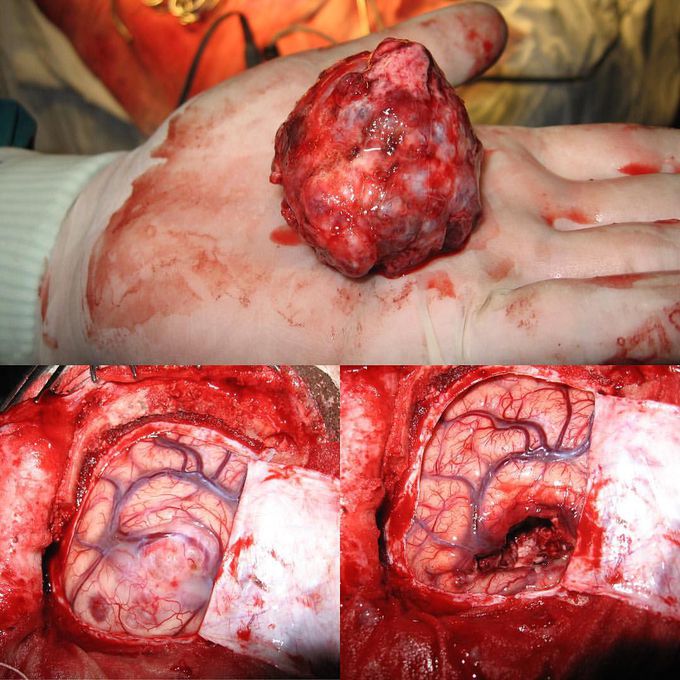


Egg size meningioma removed from the brain!
Meningiomas, as the name implies, are originated from the meninges, more specifically the meningothelial (arachnoidal) cells, which are normally involved in the protection of the brain and spinal cord by forming a thick envelope of meninges around them. They are the most common benign intracranial tumor, frequently with defined borders, attached to the inner surface of the dura mater (intradural) or extradural, and often enabling complete surgical removal, which offers the best chance for a cure. The neurosurgeon opens the skull through a craniotomy to enable full access to the meningioma. The goal of surgery is to remove the meningioma completely, including the fibers that attach it to the coverings of the brain and bone. Although the goal of surgery is to remove the tumor, the first priority is to preserve or improve the patient's neurological functions. On gross pathology, as seen above, a gray, well-circumscribed, dome-shaped mass is a characteristic finding of meningioma.
How is the patients condition currently? Any symptoms of prolonged brain damage from the surgery or from the pressure of the menigioma?
is anything placed in the resulting void for support or to aid in regrowth?
Hemodynamic stimuli&nonhemodynamic stimuliEffects of sugar on teeth



